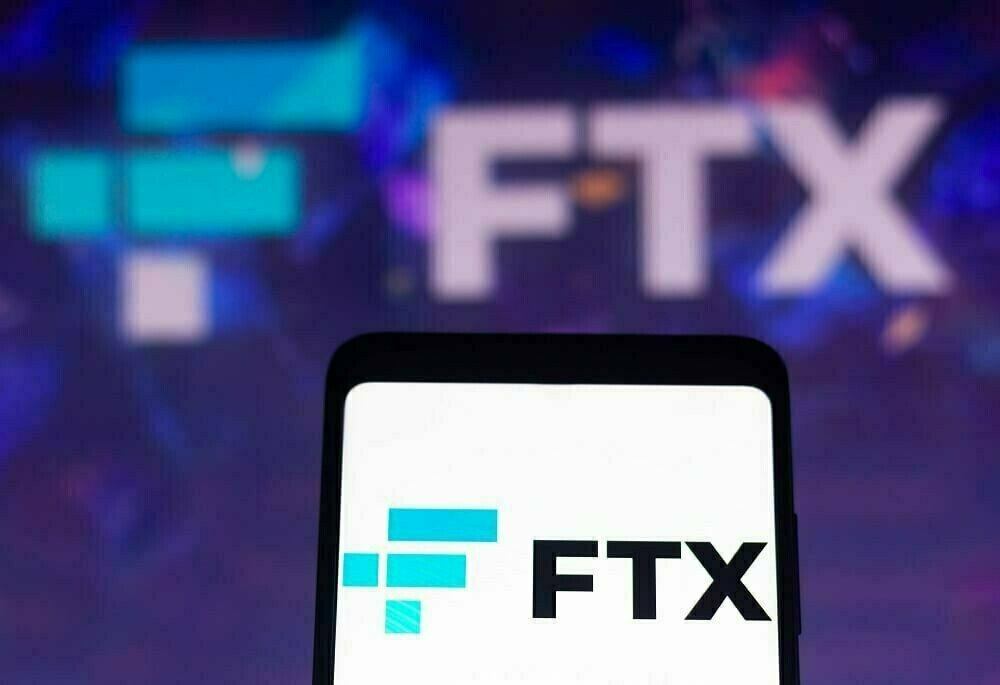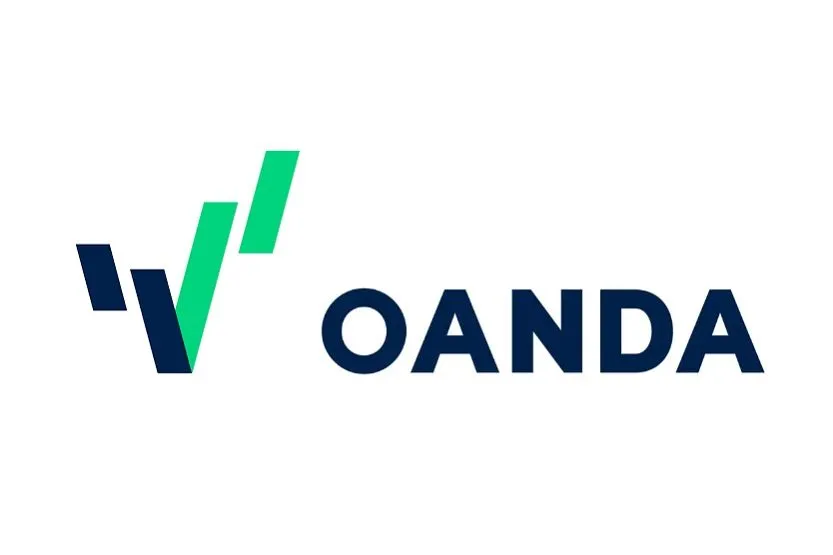FTX, the cryptocurrency exchange embroiled in bankruptcy proceedings, has initiated a claim window for affected crypto asset holders, offering payouts at rates considerably lower than the prevailing market values.
According to Wu Blockchain, the valuations set by FTX for major cryptocurrencies like Bitcoin (BTC), Ether (ETH), Solana (SOL), and Binance Coin (BNB) are markedly below their current market rates.
Specifically, BTC is priced at $16,871, ETH at $1,258, SOL at $16.24, and BNB at $286, in stark contrast to their market prices of $62,144, $3,424.62, $129.96, and $411.32, respectively.
This significant disparity in pricing has sparked outrage and concern among cryptocurrency investors, leading many to question FTX’s transparency and fairness.
The discontent has been palpable on social media platforms, where users are vocally demanding accountability from the exchange.
In response to the mounting criticism, PricewaterhouseCoopers (PwC) released a statement explaining the ongoing Chapter 11 bankruptcy proceedings involving FTX Digital Markets and its associated debtors.
The objective is to consolidate assets for a more streamlined settlement process.
PwC has announced a deadline of May 15, 2024, for creditors to file their claims through a dedicated portal, with the first interim distribution anticipated for late 2024 or early 2025. All claims are to be calculated in U.S. dollars.
Adding to the complexities, FTX has issued warnings about unauthorized third parties making bids on behalf of certain FTX debtors.
READ MORE: Bitcoin Trader Recovers $13,000 Mistaken NFT Purchase Thanks to Seller’s Generosity
This has led to a clarification regarding the sale of digital assets, which, as per a bankruptcy court order, is to be managed exclusively by Galaxy Asset Management.
FTX emphasizes that only Galaxy is authorized to oversee any transactions related to the bankruptcy proceedings, urging institutional buyers and regulatory-compliant entities to adhere strictly to this directive.
Moreover, FTX has received court approval to liquidate its over $1 billion investment in Anthropic, an artificial intelligence company, highlighting the extensive measures being taken to address the financial turmoil and fulfill creditor claims.
This development underscores the ongoing efforts to navigate the fallout from FTX’s bankruptcy and the intricate process of asset liquidation and creditor compensation.
FTX, the bankrupt exchange striving to settle its obligations to creditors following its 2022 collapse, has issued a cautionary note regarding its authorized investment manager as it proceeds with asset sales.
In a post dated March 1, FTX clarified that the sale of digital assets mandated by the bankruptcy court is exclusively overseen by Galaxy Asset Management, the authorized investment manager.
The exchange warned of unauthorized third parties attempting to solicit bids on behalf of FTX Debtors.
Moreover, FTX emphasized that any sale of locked digital assets would adhere to the existing terms and conditions governing the unlocking schedule.
The exchange has been actively engaged in restructuring efforts and repaying creditors, having recovered assets amounting to $7 billion for this purpose.
READ MORE: Chainalysis Report Reveals Surge in Darknet Market Revenue Amidst Crypto Crime Landscape
Approval was granted by the United States Bankruptcy Court for the District of Delaware during a hearing on Feb. 22 for the sale of FTX’s stake in Anthropic, an artificial intelligence (AI) firm, valued at over $1 billion.
This decision followed a motion filed by FTX seeking authorization to sell its 7.84% stake in Anthropic, an investment made in April 2022 prior to its bankruptcy filing in November of the same year.
In December 2023, FTX proposed reimbursing claimants based on crypto asset prices at the time of bankruptcy.
While creditors advocated for “in kind” repayments for crypto holdings, Judge John Dorsey ruled in favor of the debtors in a Jan. 31 verdict, citing clarity in the law.
Former FTX CEO Sam Bankman-Fried was convicted on seven charges including wire fraud, securities fraud, and money laundering conspiracy in a criminal trial on Nov. 3, 2023.
His sentencing, scheduled for March 28, carries a maximum penalty of 110 years in prison.
Decentralised finance (DeFi) lending platform and stablecoin issuer Seneca Protocol has fallen victim to exploitation, as stated in a Feb. 28 announcement on the protocol’s official X account.
According to a report disclosed to Cointelegraph, blockchain analytics firm CertiK has estimated the losses at $6.4 million thus far.
The Seneca team has urged users to revoke approvals for the affected contracts and has asserted that its personnel are “presently collaborating with security specialists to investigate the bug”.
Seneca Protocol is a DeFi lending application enabling users to deposit various cryptocurrencies as collateral, which can then be utilised to mint and borrow the protocol’s native stablecoin, SenecaUSD.
Blockchain data reveals that an account ending in 42DC managed to transfer approximately 1,385.23 Pendleton Kelp restaked Ether (PT Kelp rsETH) from a Seneca collateral pool by invoking the “performOperations” function.
Subsequently, this account exchanged these tokens for approximately $4 million worth of Ether (ETH) through three transactions.
Following these swaps, the account proceeded to transfer an additional 717.04 ETH derivative tokens from various collateral pools and exchanged them for ETH.
According to CertiK’s report, these transfers were maliciously executed due to a flaw in the protocol’s “performOperations” function.
The bug permits any account to invoke the function while specifying OPERATION_CALL as the action to be executed.
Consequently, the attacker gains the ability to “perform external calls to any address as the callee and callData are fully controlled by the attacker”.
READ MORE: Overdare Partners with Circle to Integrate Web3 Wallets and USDC Payouts for Gaming Creators
Hence, CertiK contends, the attacker managed to drain funds from the collateral pool not under its ownership.
Blockchain investigator Spreek also alerted users about the exploit on X, describing it as a “critical vulnerability”.
Spreek recommended that users should revoke approvals for the addresses used in the exploit.
According to security researcher ddimitrov22, Seneca suffers from an additional vulnerability preventing developers from pausing the Seneca contracts, as the pause and unpause functions within them are labelled as “internal”, rendering them inaccessible.
In their acknowledgment of the attack, the development team stated that they are currently conducting an investigation and will provide an update “shortly”.
Hacks and exploits continue to pose threats to Web3 users in 2024.
On Feb. 23, Axie Infinity co-founder Jeff “Jihoz” Zirlin lost $9.7 million due to a hack of his personal wallets. Concurrently, on the same day, DeFi protocol Blueberry was exploited for 457 ETH.
Bitcoin is potentially poised for a meteoric rise, with projections suggesting it could reach $180,000, spurred by a bullish signal reminiscent of historical gains.
Caleb Franzen, founder of Cubic Analytics, disclosed on March 1 that BTC price returns may surge by 260% from current levels during this cycle, in a post on X.
Franzen highlighted the significance of an ultra-rare Williams%R Oscillator signal, which has appeared only four times in history.
This indicator, analyzed on three-year timeframes, recently surpassed the overbought level, signifying a bullish trend for Bitcoin.
“The 36-month Williams%R Oscillator just closed above the overbought level for the 4th time in history,” Franzen remarked, emphasizing the bullish sentiment.
This oscillator, instrumental in predicting Bitcoin’s recovery from the 2022 bear market lows, is now indicating a potential surge into “overbought” territory above -20, a phenomenon observed only thrice before in 2013, 2016, and 2020.
Franzen cautioned against dismissing overbought signals, emphasizing their bullish momentum implications.
READ MORE: Bitcoin Surges to Highest Point in Over Two Years on Institutional Endorsement and ETF Optimism
Despite diminishing returns in each cycle, with 2020 yielding 260%, matching this performance would propel Bitcoin to $180,000.
However, Franzen stressed the unpredictability of market behavior despite historical trends, urging caution in interpreting these signals as guarantees of future performance.
Another bullish indicator, the Relative Strength Index (RSI), has also surged into overbought territory on daily timeframes, reaching levels above 80/100 on Feb. 28.
This follows a reset in late December, preceding Bitcoin’s upward momentum fueled by the launch of spot Bitcoin exchange-traded funds (ETFs) in the United States.
Monthly RSI trends further reinforce the optimism, with the indicator just entering the overbought zone, suggesting potential further upside for Bitcoin.
While indicators point to a bullish trajectory for Bitcoin, Franzen’s cautionary stance underscores the need for prudent interpretation and consideration of market dynamics beyond historical patterns.
The token representing the layer-1 blockchain Shido plummeted by as much as 94% in a mere 30 minutes subsequent to falling victim to an exploit on its Ethereum-based staking contract.
Blockchain security firm PeckShield alerted its audience to the plunge in a post dated Feb. 29 X.
In a subsequent post, it elucidated that an exploiter had succeeded in transferring the blockchain’s Ethereum staking contract to another address, following which the new owner upgraded the contract with a concealed function to withdraw staked tokens.
According to CoinGecko data, PeckShield disclosed that the attacker had withdrawn over 4.3 billion Shido tokens, equating to nearly half of the circulating token supply, which was approximately 9 billion tokens.
Before the price downturn, the value of these tokens stood at approximately $35 million.
In another post, the pseudonymous on-chain researcher ZachXBT revealed that they had identified the exploiter’s address, which had been funded through cryptocurrency initially bridged from the cross-chain protocol Layerswap and subsequently from the Arbitrum blockchain.
ZachXBT claimed to have uncovered the true identity of the wallet owner who funded the exploiter but suggested that they too had fallen victim to hacking, as “their assets were suddenly transferred before funding the exploiter.”
Several hours after the incident commenced, the Shido team issued an official statement asserting that they had neutralised any further threats against Shido.
READ MORE: ENS Resolves Dispute Over eth.link Domain with $300,000 Settlement
The protocol also stated that they had initiated an investigation and urged the hacker to engage in negotiation regarding a bounty.
Shido also assured users who staked their tokens that their assets would be returned.
Shido, a layer-1 proof-of-stake blockchain that is yet to launch its mainnet, announced its impending mainnet launch in a post dated Feb. 24 X.
SHIDO, an Ethereum-based ERC-20 token, allowed staking on the project’s connected decentralized exchange (DEX) to earn an 8% annual yield, according to its website.
Shido did not provide an immediate response to a request for comment regarding the contract exploit.
According to PeckShield, last year witnessed over 600 crypto-related hacks resulting in $2.1 billion in losses, marking a nearly 30% decrease from 2022.
Up until January of this year, there had been 30 attacks resulting in $182.5 million lost.
February also seemed to conclude as a significant month for exploiters, with $290 million stolen from PlayDapp, alongside several million dollars’ worth of crypto stolen in various wallet breaches and phishing scams.
The Bitcoin bull market commenced on March 1, according to the pseudonymous quantitative analyst PlanB, renowned for devising the controversial stock-to-flow (S2F) model for Bitcoin’s price.
As per a recent post by PlanB referencing the S2F chart, the Bitcoin accumulation phase has concluded, marking the cessation of straightforward Bitcoin buying opportunities.
“Bull market has started.
If history is any guide, we will see ~10 months of face-melting [fear of missing out] FOMO: extreme price pumps combined with multiple -30% drops.”
This assertion from the pseudonymous analyst followed Bitcoin’s surge past $60,000, the first time in over two years.
Bitcoin’s value experienced a minor decline of 0.75% in the 24-hour period ending at 3:00 pm Central European Time, settling at $62,472.
While the S2F model garnered attention during the 2021 bull run, it’s not an infallible predictor of Bitcoin’s price.
Notably, according to the chart, Bitcoin was projected to surpass $100,000 in early August 2021, when its actual value was around $44,000.
Ethereum co-founder Vitalik Buterin has also criticized the S2F model for fostering a “false sense of certainty.”
READ MORE: OpenAI Accuses The New York Times of Hacking AI Systems in Copyright Lawsuit
PlanB’s predictions align with those of other analysts.
c, a senior analyst at K33 Research, highlighted that Bitcoin typically consolidates post-halving but experiences rallies in subsequent months.
“Each halving has proven to be a solid point to enter the market. 150–400 days after the halving tends to be the sweet spot where the compounding effects of subdued miner selling pressure impact BTC positively directionally,” Lunde explained to Cointelegraph.
Moreover, the recent approval of spot Bitcoin exchange-traded funds (ETFs) has intensified investor interest in Bitcoin, contributing to its price appreciation.
Despite a 3% correction following Grayscale’s Grayscale Bitcoin Trust ETF’s sale of $598.9 million worth of BTC on Feb. 29, Bitcoin’s price surged over 22% in the past week, according to CoinMarketCap.
Excluding Grayscale’s ETF, the nine new spot Bitcoin ETFs witnessed over $2 billion in combined daily volume for the second consecutive day on Feb. 28.
These ETFs accounted for 75% of new Bitcoin investments since their launch on Jan. 11, according to a report by CryptoQuant.
Bitfinex Analysts predict that the ETFs will propel Bitcoin to new all-time highs before 2024-end, with a conservative price objective of $100,000-$120,000 by Q4 2024 and a cycle peak expected in 2025 concerning total crypto market capitalization.
OpenAI has petitioned a federal judge to dismiss certain portions of The New York Times’ copyright lawsuit, contending that the newspaper “paid someone to hack ChatGPT” and other artificial intelligence (AI) systems to fabricate misleading evidence.
In a filing at a Manhattan federal court on Monday, OpenAI asserted that The NYT induced the technology to replicate its content through “deceptive prompts that violate OpenAI’s terms of use.”
OpenAI refrained from naming the individual it alleges The NYT enlisted to manipulate its systems, thus avoiding accusations of the newspaper violating anti-hacking laws.
In the filing, OpenAI stated:
“The allegations in the Times’s complaint do not meet its famously rigorous journalistic standards.
The truth, which will come out in this case, is that the Times paid someone to hack OpenAI’s products.”
OpenAI’s assertion of “hacking” is, according to the newspaper’s attorney Ian Crosby, merely an attempt to exploit OpenAI’s products to uncover evidence of the purported theft and replication of The NYT’s copyrighted work.
In December 2023, The NYT initiated legal action against OpenAI and its primary financial backer, Microsoft.
The lawsuit alleges the unauthorised utilisation of millions of NYT articles to train chatbots disseminating information to users.
Drawing from both the United States Constitution and the Copyright Act, the lawsuit defends The NYT’s original journalism. It also implicates Microsoft’s Bing AI, alleging the creation of verbatim excerpts from its content.
READ MORE: Grayscale’s Bitcoin ETF Records Record Low Outflows Amidst Rising Market Momentum
The New York Times is one of many copyright holders litigating against tech companies for purportedly misappropriating their content in AI training. Other factions, including authors, visual artists, and music publishers, have similarly lodged lawsuits.
OpenAI has previously argued that training advanced AI models without incorporating copyrighted works is “impossible.”
In a submission to the United Kingdom House of Lords, OpenAI contended that, as copyright encompasses a broad array of human expressions, training leading AI models sans copyrighted materials would be unviable.
Tech companies contend that their AI systems ethically use copyrighted material, emphasising that such lawsuits imperil the growth of a potentially multitrillion-dollar industry.
Courts have yet to ascertain whether AI training qualifies as fair use under copyright law.
Nevertheless, some infringement claims concerning outputs from generative AI systems were dismissed due to insufficient evidence demonstrating that the AI-generated content bore resemblance to copyrighted works.
US-based cryptocurrency brokerage firm OANDA is poised to commence cryptocurrency trading services in the United Kingdom through its registered subsidiary, OANDA Crypto.
The crypto subsidiary was established last year following the firm’s acquisition of a majority stake in Financial Conduct Authority (FCA)-registered Coinpass.
The new crypto trading platform will provide trading services for over 63 cryptocurrency pairs, including Bitcoin and Ether, with intentions to incorporate additional tokens and features in the forthcoming years.
OANDA’s recent expansion in the UK follows more than a year after the company initiated crypto trading services in the US in collaboration with Paxos, a renowned crypto trading platform.
The company recently relocated its European operations from Malta to Warsaw in Poland, acquiring the Polish broker Dom Maklerski TMS Brokers SA, subsequently rebranding it to OANDA TMS.
The crypto brokerage firm has consistently targeted regions with stringent regulatory frameworks, initially focusing on the US and now extending to the United Kingdom.
Several prominent crypto companies withdrew their services from the UK since October 2023 due to the FCA’s new regulatory guidelines concerning crypto advertising.
Crypto firms like Bybit and Revolut temporarily suspended their UK operations last year, citing the new FCA promotion regulations.
READ MORE: Reddit and Google Forge AI Partnership to Boost Model Training
The new advertising regulations permit only FCA-registered virtual asset service providers to promote their activities in the country.
Additionally, these regulations mandate crypto firms to significantly modify their online platforms to better caution potential customers about investment risks.
The FCA identified “significant levels of non-compliance” among crypto firms breaching the crypto promotion rules that came into effect on October 8, 2023.
The regulator noted that between October 8 and December 31, 2023, it issued 450 consumer alerts against virtual asset companies unlawfully promoting crypto.
Conversely, OANDA’s head of digital assets, Lucian Lauerman, described the UK market as highly educated and dynamic.
He remarked that the market is aligning more with the traditional markets where the company has operated, indicating a slightly elevated regulatory standard.
Cointelegraph reached out to OANDA for comments but has not yet received a response.
The Ministry of Culture in Saudi Arabia has inaugurated a metaverse dedicated to exhibiting and safeguarding the cultural heritage of the nation, marking its founding day.
The Saudi government’s Cultural Universe metaverse initiative, which traces the extensive history of Saudi Arabia back to 1727, was launched on February 22.
Utilising Oracle’s Hyperledger Fabric 2.5 blockchain technology, the metaverse was crafted by droppGroup’s Generative Media Intelligence artificial intelligence (AI) system, known as droppPhygital.
The virtual realm adopts a first-person shooter approach to aid users in navigating the metaverse.
Users can freely traverse a shared path alongside others, exploring information displayed on either side of the route.
Proximity to virtual depictions of historical events triggers voice audio that elaborates on the event in depth.
However, this audio feature is currently limited to Arabic and does not offer English translations.
The Cultural Universe encompasses various sectors dedicated to music, art, history, cuisine, crafts, and other facets of Saudi heritage, along with mini video games.
This service is freely accessible via websites, mobile devices, virtual reality headsets, and other compatible digital platforms. The official announcement from the Saudi government stated:
READ MORE: Bitcoin Halving Threatens US Miner Profitability and Sparks Global Migration Talks
“This cross-platform compatibility embodies the Ministry of Culture’s commitment to inclusivity, enabling a diverse global audience to explore and engage with the rich history of Saudi culture.”
The Saudi Ministry of Culture, entrusted with conserving and promoting the nation’s cultural legacy while fostering contemporary artistic expression, perceives the metaverse as a “transformative moment” and regards the initiative as a cultural revolution.
According to Samuel Huber, CEO of LandVault, a metaverse company collaborating with various government entities in the Middle East, Saudi Arabia, alongside other Middle Eastern nations, has transcended the metaverse’s “era of hype” and is progressing towards leveraging the technology to bolster their economies.
In an interview with Cointelegraph, Huber elucidated that the metaverse entails constructing 3D experiences embedded within websites. He remarked:
“What we found is the biggest segment are the governments in the Middle East, especially the UAE [United Arab Emirates], Saudi and Qatar, which are trying to digitalise their infrastructure and create really interesting economies for their citizens.”
He further stated that, akin to blockchain and AI, the metaverse stands as “one of those pillars” that the Middle East is eyeing for economic advancement.
The Ethereum Name Service (ENS) developer is poised to resolve its dispute with Manifold Finance over ownership of the eth.link domain following the approval of a $300,000 settlement by its decentralised autonomous organisation (DAO).
A vote by the ENS DAO concluded on Feb. 26, with approximately 88% endorsing the settlement.
This agreement will see ENS Labs dropping its lawsuit and paying $300,000 to Manifold while retaining the domain name.
Additionally, 84% of voters approved a $750,000 reimbursement for ENS Labs’ legal expenses.
This settlement brings an end to an 18-month-long conflict that saw ENS Labs suing Manifold and domain registrars GoDaddy and Dynadot in an Arizona District Court.
The lawsuit resulted in an order preventing the domain from being transferred away from ENS Labs.
ENS founder Nick Johnson explained in a Feb. 13 forum post that Manifold’s settlement terms included a demand for $300,000 from ENS Labs, alongside confidentiality and non-disparagement clauses.
Johnson stated, “In return, they are offering an all-parties settlement, which would result in the dismissal of the case and ENS Labs retaining the eth.link domain name.”
ENS functions as a blockchain equivalent of the Domain Name System (DNS), translating domain names like cointelegraph.com into IP addresses for browser accessibility.
Due to the incompatibility between the two systems, ENS utilises the eth.link domain to support “.eth” ENS-based domains.
READ MORE: Carlson Group Adds Top Bitcoin ETFs to RIA Offerings, Prioritising Low Fees and Growth
The ownership of eth.link lapsed in July 2022, as the early contributor Virgil Griffith, who owned it, could not renew it while serving a jail sentence.
Subsequently, GoDaddy, the registrar for eth.link, allowed the domain to expire, enabling Manifold to acquire it through auction on Dynadot in September 2022.
ENS initiated legal action against the three entities, obtaining a court order halting the domain’s transfer after they failed to appear at a court hearing.
Following months of legal proceedings, Arizona District Judge John Tuchi ordered Dynadot to unlock eth.link in July 2023 for transfer to ENS.
It appears that ENS and GoDaddy have reconciled over the matter, as they recently collaborated to offer .eth ENS domain holders the opportunity to link their domains with traditional domains for free earlier this month.












